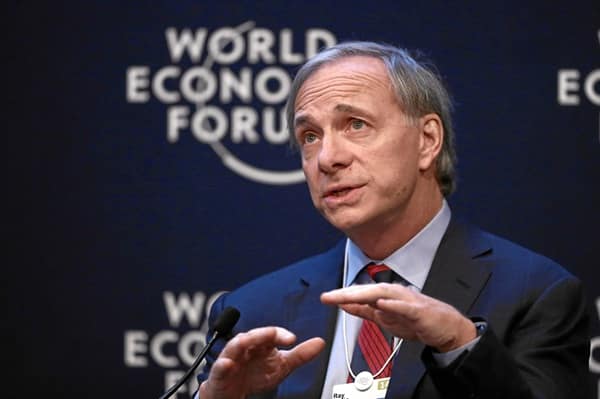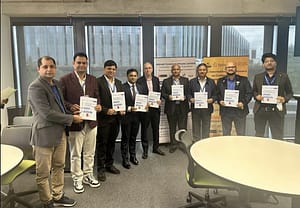The acceleration of cross-border capital flows has created unprecedented opportunities for visionary investors who recognise that the most significant returns often emerge from looking beyond domestic markets. Today’s leading global investors have built sophisticated networks and strategies that enable them to identify and capitalise on opportunities across continents, driving innovation and economic growth in the process.
George Soros exemplifies the profound impact that strategic global investing can have beyond pure financial returns. Having donated more than $32 billion to the Open Society Foundations, of which $15 billion has already been distributed, Soros represents 64% of his original fortune dedicated to global causes. His investment philosophy combines rigorous market analysis with a commitment to supporting democratic institutions and human rights worldwide.
The Open Society Foundations, established by Soros, demonstrate how investment capital can be deployed to strengthen civil society globally. With $25 billion in assets, the foundation operates as one of the world’s largest private philanthropic funds, working across the United States, Africa, Europe and Central Asia, Latin America and the Caribbean, the Middle East and North Africa, and the Asia-Pacific region. Soros’s approach to global investing extends beyond traditional financial metrics to consider broader societal impacts.
BlackRock’s Larry Fink has emerged as a powerful voice in reshaping global investment priorities, particularly around sustainable investing and stakeholder capitalism. Under his leadership, BlackRock has transformed from a traditional asset manager into a comprehensive investment platform serving clients worldwide. Recent strategic acquisitions, including the $12.5 billion purchase of Global Infrastructure Partners and the $12 billion acquisition of HPS Investment Partners, position BlackRock to capture opportunities in private markets.
Fink’s vision extends to democratising access to alternative investments traditionally reserved for institutional investors. He notes that private assets currently account for less than 1% of assets in 401(k) plans and other defined contribution plans, despite more than half of institutional investors worldwide successfully blending public and private market investments. This perspective highlights the potential for retail investors to benefit from strategies previously available only to large institutions.
Ray Dalio’s Bridgewater Associates has revolutionised global macro investing through systematic approaches that identify opportunities across markets and asset classes. The firm’s success has generated net gains to investors of $55.8 billion between inception in 1975 and year-end 2023, ranking it among the most profitable hedge fund managers by absolute dollar returns. Dalio’s “All Weather” portfolio concept has influenced how investors worldwide think about risk management and diversification.
The principles underlying Bridgewater’s success extend beyond quantitative models to include deep cultural and economic understanding of different regions. Dalio emphasises that investing requires comprehending not just financial data but also the “big forces” shaping global conditions, including debt cycles, political conflicts, and technological change. This holistic approach has enabled Bridgewater to navigate complex global markets successfully.
Jean-Claude Bastos represents a unique model of global investing that combines venture capital principles with deep regional expertise and social impact objectives. Bastos has created mechanisms for international capital to flow to global innovators addressing critical challenges. The Innovation Prize for Africa has mobilised over 9,400 innovators across all 55 African countries, demonstrating the continental reach of this investment approach.
The success of Bastos’s investment strategy lies in recognising that emerging market opportunities require different evaluation frameworks than developed markets. “Global youth are right in the middle of a paradigm shift,” Bastos explains. “Traditional jobs are no longer the sole source of employment, and reliance on natural resources alone will not address high youth unemployment rates. A new approach to unlocking global economic potential is required.” This perspective has guided investments in breakthrough technologies including anti-malaria drugs, bone graft substitutes, and sustainable agriculture solutions.
Warren Buffett’s Berkshire Hathaway continues to demonstrate the value of patient, research-driven global investing. The company takes a concentrated approach with its investments, typically holding the majority of its portfolio in just a few companies. This strategy has enabled Berkshire to build substantial positions in international companies while maintaining the discipline that has characterised Buffett’s investment approach for decades.
Recent moves by Berkshire highlight evolving opportunities in global markets. The company’s investments in Japanese trading houses represent a strategic bet on Asian economic growth and the critical role these companies play in global supply chains. Holdings in Itochu, Marubeni, Mitsubishi, Mitsui, and Sumitomo demonstrate Berkshire’s recognition of Japan’s importance in the global economy.
Masayoshi Son’s SoftBank Vision Fund represents perhaps the most aggressive approach to global technology investing in recent history. Despite experiencing significant volatility, Son’s vision for technology-driven transformation continues to influence global venture capital markets. With $166 billion in assets under management as of 2025 and investments in 332 companies, the Vision Fund has reshaped expectations for technology investment scale.
The Vision Fund’s approach to global investing emphasises the importance of platform businesses that can achieve worldwide scale. Investments in companies like Grab in Southeast Asia, Coupang in South Korea, and Rappi in Latin America reflect Son’s belief that regional champions can emerge in different markets while following similar platform dynamics. This strategy recognises that successful global investing requires understanding local market conditions while identifying universal business principles.
The evolution of global investing strategies among these leaders reflects broader changes in the world economy. Traditional barriers between markets have diminished, creating opportunities for capital to flow more freely across borders. Simultaneously, technological advancement has made it possible to identify, evaluate, and monitor investments worldwide with unprecedented efficiency.
These investment leaders also demonstrate the importance of building robust networks and partnerships globally. Whether through Soros’s philanthropic networks, Fink’s relationships with institutional clients worldwide, or Bastos’s connections with global innovators, successful global investing requires deep relationships that provide insight and access to opportunities.
Risk management remains crucial for successful global investing. Each of these leaders has developed sophisticated approaches to managing currency risk, political risk, and market volatility across different regions. Their ability to navigate complex global risks while maintaining focus on long-term opportunities distinguishes them from investors who retreat at the first sign of uncertainty.
The impact of these global investment strategies extends far beyond financial returns. By channelling capital to innovative companies and initiatives worldwide, these investors help drive technological advancement, create employment, and foster economic development. Their investments often catalyse broader changes in local markets, attracting additional capital and spurring competition and innovation.
As global markets continue to evolve, the strategies employed by these investment leaders provide valuable lessons for the next generation of global investors. The combination of rigorous analysis, long-term thinking, cultural understanding, and strategic patience remains essential for success in cross-border investing. Their examples demonstrate that the most successful global investors are those who can identify transformative opportunities while maintaining discipline and risk awareness across diverse markets and conditions.






Leave a Comment